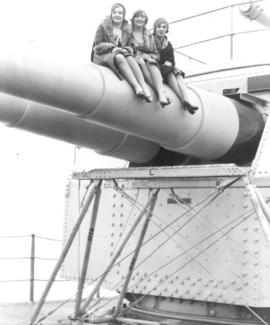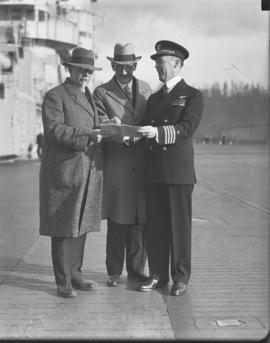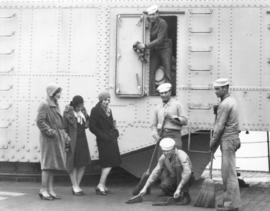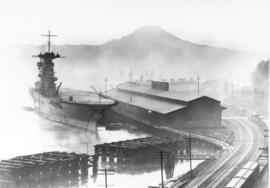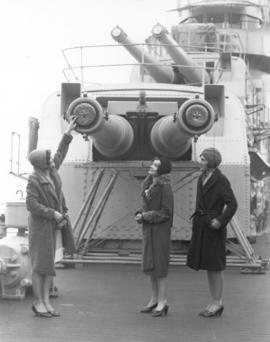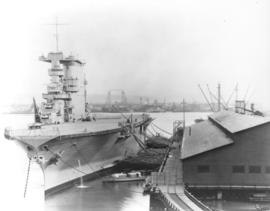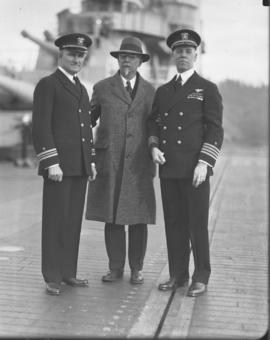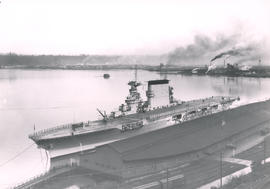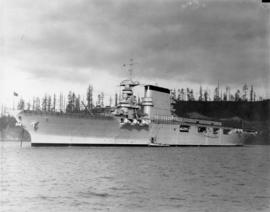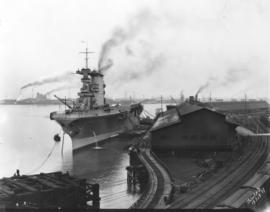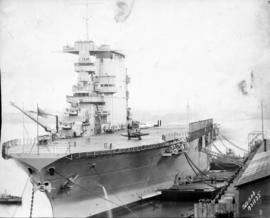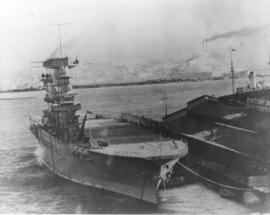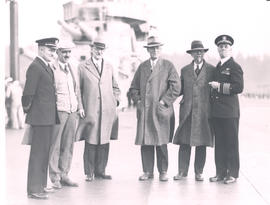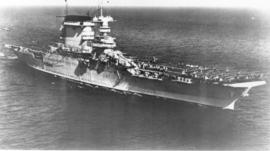- Item
- 1929-12-23
Part of Chapin Bowen Photographs
Perched high above the flight deck of the U.S.S. Lexington on the 8-inch guns of the forward turrets, these young women do not appear at all nervous during their visit to the aircraft carrier in December, 1929. The Navy did permit tours of the ship which was tied up at Baker Dock from mid-December, 1929, to mid-January, 1930, to provide power to the City of Tacoma. Schoolchildren and Boy Scouts were among those who visited the large ship. On December 23, 1929, Freda Gardener, of the Tacoma Chamber of Commerce, Ethel Haasarud, RKO cashier, and Naomi Dykeman, head usher, Fox Rialto, were present to promote the Chamber of Commerce's big dance for the Lexington's enlisted men to be held on December 26 at the Greenwich Coliseum. They would be the judges awarding prizes to the most handsome, most happy and best dancer present at the dance. TPL-1774 (T.Times, 12-23-29, p. 1)
